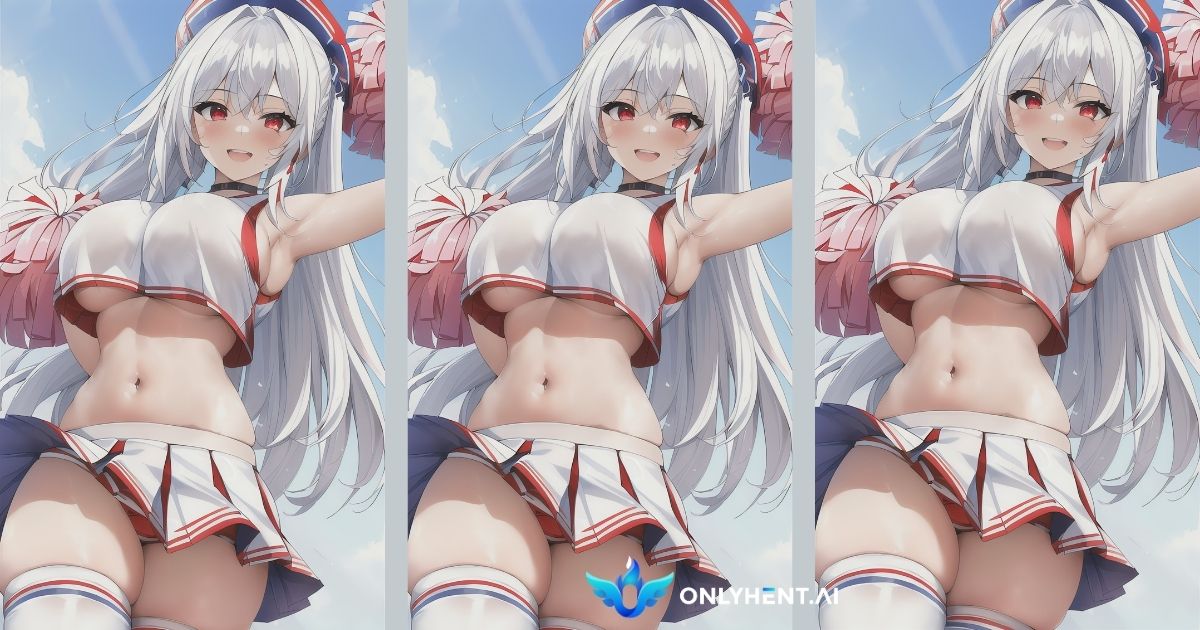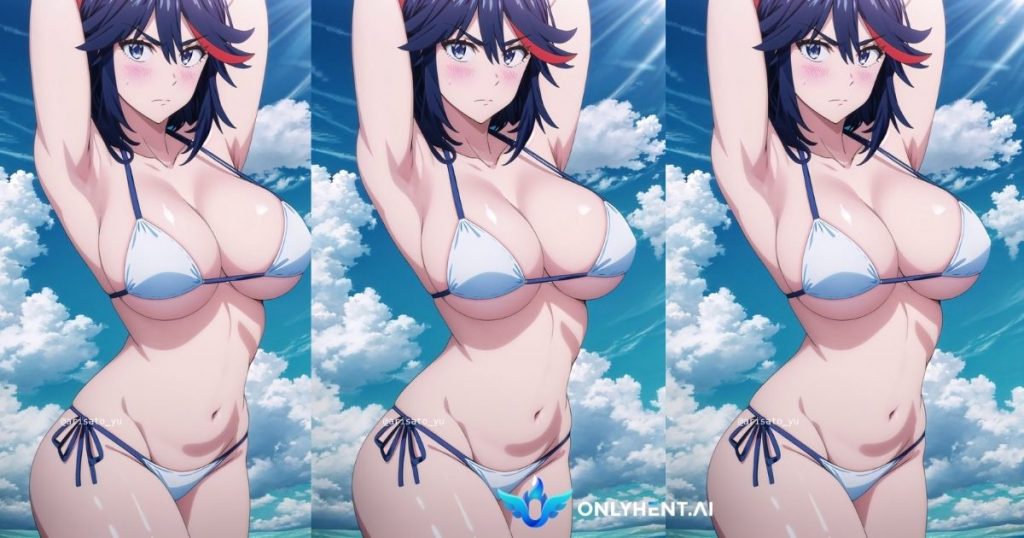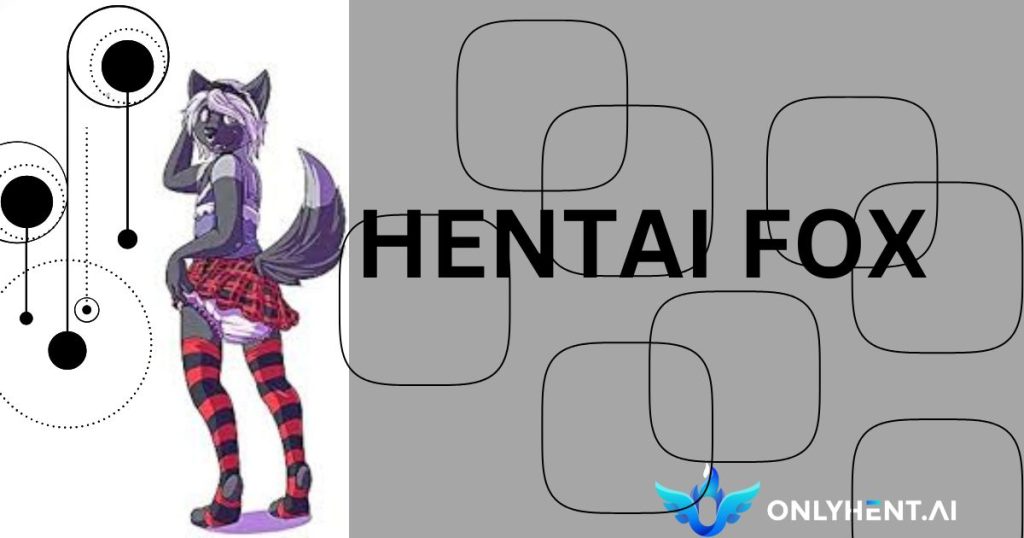Manga, originating from Japan, refers to a form of comic book or graphic novel that encompasses a wide range of genres and styles. These illustrated narratives are typically serialized and published in manga magazines or compiled into volumes known as tankobon. Manga often features diverse storytelling techniques, intricate artwork, and unique cultural influences. With its rich history dating back to the 19th century, manga has evolved into a vibrant medium that captivates readers of all ages across the globe.
Importance of Understanding Manga Genres
Understanding manga genres is essential for both enthusiasts and newcomers to the medium. Manga encompasses a vast array of genres, each with its own distinct themes, storytelling conventions, and artistic styles. By familiarizing oneself with manga genres, readers can discover works that align with their preferences and interests. Additionally, delving into different genres enables readers to explore diverse narratives, perspectives, and artistic expressions, thereby enriching their reading experience. Moreover, an understanding of manga genres facilitates meaningful discussions, critical analysis, and appreciation of the medium’s artistic and cultural significance.
Overview of Manga Genres
Shonen Manga Genres
Manga genres encompass a wide variety of storytelling styles and themes, catering to diverse audiences. Shonen, one of the most popular genres, primarily targets young male readers but also appeals to audiences of all ages and genders. Shonen manga is characterized by its focus on action-packed adventures, coming-of-age narratives, and themes of friendship, perseverance, and self-discovery. These manga often feature dynamic protagonists embarking on epic journeys, facing formidable challenges, and honing their skills through intense battles and competitions.
Some popular examples of Shonen manga include “Naruto,” “Dragon Ball,” and “One Piece.” These iconic series have garnered widespread acclaim for their compelling characters, intricate world-building, and adrenaline-fueled storytelling. With their captivating plots and dynamic artwork, Shonen manga captivates readers with its sense of adventure, camaraderie, and boundless imagination.
Shonen manga’s target audience comprises predominantly young male readers, typically ranging from pre-adolescence to young adulthood. However, the genre’s broad appeal transcends demographic boundaries, attracting readers of all genders and ages who enjoy thrilling action, compelling characters, and immersive storytelling experiences.
Shojo Manga Genres
Shojo manga, another prominent genre within the realm of manga, is primarily geared towards young female readers. Known for its emphasis on romance, relationships, and emotional narratives, Shojo manga explores themes of love, friendship, and personal growth. These manga often feature relatable female protagonists navigating the complexities of adolescence, romance, and self-discovery amidst a backdrop of everyday life or fantastical settings.
Popular examples of Shojo manga include “Sailor Moon,” “Fruits Basket,” and “Nana.” These beloved series are celebrated for their captivating romances, endearing characters, and heartfelt storytelling that resonates with readers of all ages. Shojo manga’s unique blend of romance, drama, and whimsical charm captivates audiences with its poignant exploration of love, identity, and the human experience.
The target audience for Shojo manga primarily comprises young female readers, ranging from pre-adolescence to young adulthood. However, the genre’s universal themes of love, friendship, and self-discovery appeal to readers of all genders and ages who appreciate heartfelt storytelling, relatable characters, and emotional depth.
Seinen Manga Genres
Seinen manga, catering to an older male demographic, offers a diverse array of mature themes, complex narratives, and thought-provoking storytelling. Unlike Shonen manga, which targets younger audiences, Seinen manga explores more mature and nuanced subject matter, ranging from gritty crime dramas and psychological thrillers to philosophical reflections and social commentary.
Popular examples of Seinen manga include “Berserk,” “Akira,” and “Death Note.” These acclaimed series are renowned for their dark and mature themes, intricate plots, and sophisticated storytelling that challenges conventional narrative tropes. Seinen manga’s exploration of complex characters, moral ambiguity, and existential themes resonates with mature readers seeking intellectually stimulating and emotionally resonant narratives.
The target audience for Seinen manga primarily comprises older male readers, typically ranging from young adults to mature audiences. However, the genre’s mature themes, sophisticated storytelling, and nuanced characterization appeal to readers of all genders and ages who appreciate thought-provoking narratives, complex characters, and mature subject matter.
Josei Manga Genres
Josei manga, often referred to as “women’s manga,” is targeted towards adult female readers and explores a diverse range of themes related to romance, relationships, and personal growth. Unlike Shojo manga, which focuses on adolescent romance and coming-of-age narratives, Josei manga delves into more mature and introspective explorations of love, life, and adulthood.
Popular examples of Josei manga include “Nana,” “Honey and Clover,” and “Paradise Kiss.” These celebrated series are renowned for their realistic portrayals of adult relationships, complex characters, and poignant storytelling that resonates with adult readers navigating the complexities of love, career, and self-discovery. Josei manga’s emphasis on mature themes, nuanced characterization, and emotional depth offers a compelling and relatable reading experience for adult audiences.
The target audience for Josei manga primarily comprises adult female readers, typically ranging from young adults to mature audiences. However, the genre’s realistic portrayals of adult relationships, complex characters, and emotional depth appeal to readers of all genders and ages who appreciate mature and introspective storytelling.
Action and Adventure Manga Genre
Definition and Common Elements Manga Genre
Within the expansive realm of manga genres, the Action and Adventure genre stands out for its thrilling narratives, dynamic characters, and pulse-pounding excitement. This genre is characterized by its focus on adrenaline-fueled escapades, epic battles, and heroic journeys across fantastical worlds or imaginative landscapes. Action and Adventure manga often feature protagonists embarking on daring quests, confronting formidable adversaries, and overcoming seemingly insurmountable challenges through courage, determination, and skill. With its emphasis on fast-paced action, intense combat sequences, and high-stakes conflicts, this genre offers readers an exhilarating and immersive storytelling experience.
Notable Examples Manga Genre
One Piece Manga Genres
“One Piece,” created by Eiichiro Oda, stands as one of the most iconic and enduring manga series within the Action and Adventure genre. Set in a vibrant world of pirates, sea monsters, and mythical treasures, “One Piece” follows the adventures of Monkey D. Luffy and his crew of Straw Hat Pirates as they sail the treacherous seas in search of the legendary One Piece, the ultimate prize coveted by every pirate. With its richly developed characters, expansive world-building, and epic story arcs spanning continents and oceans, “One Piece” has captured the hearts of millions of readers worldwide, cementing its status as a timeless classic of manga storytelling.
Attack on Titan Manga Genres
“Attack on Titan,” created by Hajime Isayama, offers a gripping blend of Action, Adventure, and Dark Fantasy elements set against a backdrop of apocalyptic terror and existential dread. The story unfolds in a world besieged by giant humanoid creatures known as Titans, who devour humanity with ruthless impunity. In a desperate struggle for survival, the remnants of humanity rally behind the walls of their fortified cities, where they train as soldiers to combat the Titan threat.
Led by the intrepid Eren Yeager, a young warrior determined to uncover the truth behind the Titans’ origins, “Attack on Titan” delivers a harrowing and suspenseful narrative filled with shocking twists, intense battles, and profound philosophical themes that resonate with readers on a visceral and emotional level.
Naruto Manga Genres
“Naruto,” created by Masashi Kishimoto, follows the coming-of-age journey of Naruto Uzumaki, a spirited young ninja with dreams of becoming the strongest warrior and leader of his village, the Hokage. Set in a world where ninja clans wage war and wield powerful elemental abilities, “Naruto” explores themes of friendship, perseverance, and redemption as Naruto navigates the trials and tribulations of ninja training, rivalry, and warfare. With its compelling characters, intricate combat techniques, and epic story arcs spanning generations, “Naruto” has captivated audiences with its blend of action-packed battles, heartfelt drama, and profound moral lessons, making it a beloved cornerstone of the Action and Adventure genre in manga.
Romance Manga Genre
Definition and Common Elements Manga Genre
The Romance genre in manga encompasses narratives centered around love, relationships, and emotional connections between characters. These stories often explore themes of affection, attraction, and intimacy, presenting various forms of romantic entanglements, from heartwarming romances to complex love triangles.
Common elements found in Romance manga include character-driven plots, emotional depth, and romantic tension, as well as themes of self-discovery, acceptance, and overcoming obstacles in pursuit of love. With its focus on heartfelt storytelling, relatable characters, and tender moments of romance, the Romance genre offers readers a captivating and emotionally resonant reading experience.
Notable Examples Manga Genre
Fruits Basket Manga Genres
“Fruits Basket,” created by Natsuki Takaya, is a beloved Romance manga renowned for its poignant storytelling, endearing characters, and emotional depth. The story follows Tohru Honda, a kind-hearted high school girl who discovers that her classmates, the enigmatic Sohma family, are cursed to transform into animals of the Chinese zodiac when embraced by someone of the opposite sex.
As Tohru becomes entwined in the lives of the Sohma family, she forms deep bonds of friendship and love while uncovering the secrets of their cursed lineage. “Fruits Basket” captivates readers with its themes of acceptance, healing, and the transformative power of love, making it a timeless classic in the Romance genre.
Toradora! Manga Genres
“Toradora!,” written by Yuyuko Takemiya and illustrated by Yasu, is a charming Romance manga that follows the unlikely relationship between Ryuuji Takasu, a gentle-hearted high school student with a fearsome appearance, and Taiga Aisaka, a petite but feisty girl known as the “Palmtop Tiger.” Despite their contrasting personalities, Ryuuji and Taiga form an unconventional partnership to help each other pursue their respective crushes. As they navigate the complexities of friendship, family, and teenage romance, Ryuuji and Taiga discover unexpected feelings blossoming between them. “Toradora!” enchants readers with its endearing characters, witty banter, and heartfelt exploration of love and friendship in adolescence.
My Little Monster Manga Genres
“My Little Monster,” created by Robico, is a delightful Romance manga that chronicles the evolving relationship between Mizutani Shizuku, a studious and aloof high school student, and Haru Yoshida, a troublemaker with a volatile temperament. After a chance encounter leads to an unexpected friendship, Shizuku and Haru embark on a journey of self-discovery, navigating the highs and lows of teenage romance and personal growth.
As they confront their insecurities, overcome obstacles, and forge deeper connections with each other and their friends, Shizuku and Haru learn valuable lessons about love, acceptance, and the importance of being true to oneself. “My Little Monster” enchants readers with its quirky humor, heartfelt moments, and genuine portrayal of young love, making it a cherished gem in the Romance genre.
Fantasy and Supernatural Manga Genre
Definition and Common Elements Manga Genre
The Fantasy and Supernatural genres in manga transport readers into imaginative realms filled with magic, mythical creatures, and otherworldly phenomena. These genres encompass narratives that explore fantastical worlds, supernatural powers, and extraordinary adventures beyond the constraints of reality.
Common elements found in Fantasy and Supernatural manga include fantastical settings, mythical creatures, mystical powers, and epic quests. These stories often blend elements of folklore, mythology, and imagination to create immersive and enchanting storytelling experiences that captivate readers with their sense of wonder and possibility.
Notable Examples Manga Genre
Fullmetal Alchemist Manga Genres
“Fullmetal Alchemist,” created by Hiromu Arakawa, is a masterpiece of Fantasy manga that follows the epic journey of brothers Edward and Alphonse Elric as they search for the Philosopher’s Stone to restore their bodies after a failed alchemical experiment. Set in a world where alchemy is both a science and an art, “Fullmetal Alchemist” explores themes of sacrifice, redemption, and the consequences of tampering with nature’s laws.
With its richly developed world-building, complex characters, and thought-provoking themes, “Fullmetal Alchemist” has earned widespread acclaim as one of the greatest manga of all time, captivating readers with its blend of fantasy, adventure, and profound storytelling.
Death Note Manga Genres
“Death Note,” written by Tsugumi Ohba and illustrated by Takeshi Obata, is a gripping Supernatural manga that follows the moral and psychological battle between Light Yagami, a high school student who gains the power to kill anyone whose name he writes in a supernatural notebook, and L, a brilliant detective determined to apprehend him. As Light’s actions spiral out of control and the death toll rises, he grapples with questions of morality, justice, and the nature of power. “Death Note” captivates readers with its intense cat-and-mouse game, intricate plot twists, and philosophical exploration of the consequences of absolute power, making it a seminal work in the Supernatural genre.
Demon Slayer Manga Genres
“Demon Slayer,” created by Koyoharu Gotouge, is an exhilarating Fantasy manga that follows the journey of Tanjiro Kamado, a young boy who becomes a Demon Slayer after his family is slaughtered by demons, and his quest to avenge their deaths and cure his sister, Nezuko, who has been transformed into a demon. Set in a world plagued by demonic threats, “Demon Slayer” combines elements of action, adventure, and supernatural horror as Tanjiro battles powerful demons and uncovers the secrets of his family’s tragic fate. With its breathtaking artwork, dynamic action scenes, and heartfelt character development, “Demon Slayer” has captured the hearts of readers worldwide, becoming a cultural phenomenon in the Fantasy genre.
Science Fiction Manga Genre
Definition and Common Elements Manga Genre
The Science Fiction genre in manga explores futuristic worlds, advanced technology, and speculative concepts that push the boundaries of imagination and scientific possibility. These narratives often delve into themes of space exploration, artificial intelligence, dystopian societies, and the ethical implications of scientific advancement.
Common elements found in Science Fiction manga include futuristic settings, advanced technology, cybernetic enhancements, and existential questions about humanity’s place in the universe. With its blend of scientific speculation, imaginative storytelling, and philosophical inquiry, the Science Fiction genre offers readers a thought-provoking and visionary exploration of the possibilities and pitfalls of the future.
Notable Examples Manga Genre
Ghost in the Shell Manga Genres
“Ghost in the Shell,” created by Masamune Shirow, is a seminal work of Science Fiction manga that explores themes of consciousness, identity, and the integration of technology into the human body. Set in a future where cybernetic enhancements and artificial intelligence are commonplace, “Ghost in the Shell” follows Major Motoko Kusanagi and her team of elite operatives as they investigate cybercrimes and confront existential threats to humanity’s existence.
With its thought-provoking exploration of transhumanism, cybernetics, and the nature of consciousness, “Ghost in the Shell” has influenced countless works of Science Fiction and captivated readers with its blend of action, philosophy, and existential intrigue.
Akira Manga Genres
“Akira,” created by Katsuhiro Otomo, is a groundbreaking Science Fiction manga that revolutionized the genre with its stunning artwork, dystopian setting, and visionary storytelling. Set in a post-apocalyptic Neo-Tokyo ravaged by war and political corruption, “Akira” follows the exploits of Kaneda and Tetsuo, two friends caught up in a web of government conspiracy, psychic powers, and existential dread.
As they confront the dark secrets of their society and the enigmatic power known as Akira, they are drawn into a cataclysmic showdown that will determine the fate of humanity. “Akira” captivates readers with its visceral action, mind-bending plot twists, and haunting portrayal of a society on the brink of collapse, cementing its status as a timeless classic in the Science Fiction genre.
Astro Boy Manga Genres
“Astro Boy,” created by Osamu Tezuka, is a pioneering work of Science Fiction manga that introduced readers to the iconic character of Astro Boy, a powerful robot with human emotions who fights for justice and equality in a world divided by prejudice and discrimination. Set in a future where robots coexist with humans, “Astro Boy” explores themes of artificial intelligence, ethics, and the nature of humanity through its episodic adventures and heartfelt storytelling.
With its endearing characters, timeless themes, and imaginative world-building, “Astro Boy” has inspired generations of readers and creators alike, leaving an indelible mark on the Science Fiction genre and popular culture as a whole.
Horror Manga Genre
Definition and Common Elements
The Horror genre in manga delves into the realms of fear, suspense, and the supernatural, offering readers chilling tales of terror that linger long after the final page is turned. These narratives explore themes of the macabre, the occult, and the unknown, instilling a sense of dread and unease in readers through atmospheric storytelling, psychological horror, and visceral imagery.
Common elements found in Horror manga include eerie settings, grotesque creatures, supernatural phenomena, and psychological suspense, as well as themes of mortality, madness, and the darker aspects of human nature. With its ability to evoke primal fears and provoke visceral reactions, the Horror genre offers readers a spine-tingling and exhilarating reading experience that taps into the deepest recesses of the human psyche.
Notable Examples Manga Genre
Tokyo Ghoul Manga Genres
“Tokyo Ghoul,” created by Sui Ishida, is a gripping Horror manga that immerses readers in a dark and sinister world populated by flesh-eating ghouls who lurk in the shadows of Tokyo’s streets. The story follows Ken Kaneki, a college student who undergoes a harrowing transformation into a half-ghoul after a chance encounter with a beautiful and enigmatic girl.
As Ken grapples with his newfound identity and struggles to survive in a society that fears and hunts ghouls, he is drawn into a deadly conflict between humans and monsters that will test his humanity and sanity to the brink. “Tokyo Ghoul” captivates readers with its visceral horror, moral ambiguity, and existential themes, offering a haunting and thought-provoking exploration of the nature of identity, morality, and the human condition.
Uzumaki Manga Genres
“Uzumaki,” created by Junji Ito, is a surreal and unsettling Horror manga that plunges readers into a nightmarish world of spirals, madness, and cosmic horror. Set in the small Japanese town of Kurôzu-cho, “Uzumaki” follows the residents’ descent into madness as they become obsessed with spirals and spiral-related phenomena, unleashing unspeakable horrors upon themselves and their community.
Through its episodic tales of terror, grotesque imagery, and atmospheric storytelling, “Uzumaki” explores themes of obsession, paranoia, and the destructive power of the unknown, leaving readers in a state of existential dread and psychological unease long after the final page is turned. With its masterful blend of surrealism, psychological horror, and existential dread, “Uzumaki” stands as a testament to Junji Ito’s unparalleled skill as a master of Horror manga and a pioneer of the genre.
Junji Ito’s Works Manga Genres
Junji Ito, one of the most acclaimed Horror manga artists of all time, has created a diverse and chilling body of work that has terrified and fascinated readers for decades. Known for his surreal art style, intricate detail, and macabre imagination, Junji Ito’s works explore a wide range of horrifying themes and concepts, from grotesque body horror and supernatural phenomena to psychological terror and cosmic dread. Some notable examples of Junji Ito’s works include “Tomie,” a chilling tale of a beautiful but malevolent immortal girl who inspires obsessive love and madness in those who encounter her; “The Enigma of Amigara Fault,” a surreal and claustrophobic story about a mysterious fault line that draws people to their doom; and “Gyo,” a grotesque and nightmarish tale of sentient, rotting fish that invade the land and unleash chaos and terror upon humanity.
With his unparalleled ability to evoke primal fears and provoke visceral reactions, Junji Ito has earned a reputation as a master of Horror manga and a true visionary of the genre, leaving an indelible mark on the medium and influencing generations of creators and readers alike.
Slice of Life and Comedy Manga Genre
Definition and Common Elements
The Slice of Life and Comedy genres in manga offer readers a delightful and lighthearted glimpse into the everyday lives, experiences, and relationships of ordinary people. Slice of Life manga typically focuses on mundane, everyday activities, interpersonal interactions, and moments of introspection, presenting relatable and heartwarming stories that resonate with readers on a personal level.
Common elements found in Slice of Life manga include realistic settings, character-driven narratives, humor, and themes of friendship, family, and personal growth. Meanwhile, Comedy manga infuses these slice-of-life narratives with humor, wit, and comedic situations, eliciting laughter and joy from readers through clever dialogue, slapstick comedy, and absurd scenarios. With their charming characters, witty humor, and gentle storytelling, Slice of Life and Comedy manga offer readers an endearing and uplifting reading experience that celebrates the beauty of ordinary life.
Notable Examples Manga Genre
My Youth Romantic Comedy Is Wrong, As I Expected Manga Genres
“My Youth Romantic Comedy Is Wrong, As I Expected,” also known as “Oregairu,” is a beloved Slice of Life and Comedy manga that follows the misadventures of Hachiman Hikigaya, a cynical and antisocial high school student, as he navigates the complexities of friendship, romance, and adolescence. Tasked with joining the school’s Service Club, Hachiman finds himself reluctantly helping his classmates with their personal problems and social dilemmas, often with hilariously disastrous results. Through its witty dialogue, relatable characters, and insightful commentary on youth and society, “My Youth Romantic Comedy Is Wrong, As I Expected” offers a humorous and thought-provoking exploration of the challenges and absurdities of teenage life.
Barakamon Manga Genres
“Barakamon,” created by Satsuki Yoshino, is a heartwarming Slice of Life manga that follows the journey of Seishuu Handa, a talented but hot-tempered calligrapher who moves to a remote island village to find inspiration and rediscover his passion for his art. As Seishuu adapts to rural life and forms bonds with the eccentric villagers, he learns valuable lessons about creativity, community, and self-discovery. With its charming cast of characters, tranquil setting, and gentle humor, “Barakamon” offers readers a delightful and uplifting slice-of-life experience that celebrates the simple joys of friendship, creativity, and living in harmony with nature.
Gintama Manga Genres
“Gintama,” created by Hideaki Sorachi, is a wildly popular Comedy manga that blends elements of satire, parody, and action-adventure in a zany and irreverent romp through an alternate-history Edo period Japan inhabited by aliens and samurai.
The story follows Gintoki Sakata, a lazy and eccentric samurai-for-hire, and his ragtag group of oddball companions as they take on odd jobs, battle aliens, and navigate the absurdities of their world with wit, humor, and occasional bouts of heartfelt sincerity. With its outrageous humor, clever pop culture references, and unexpected emotional depth, “Gintama” delights readers with its offbeat charm and infectious sense of fun, earning its reputation as one of the most beloved and enduring Comedy manga of all time.
Conclusion
In conclusion, manga genres offer a rich and diverse tapestry of storytelling that captivates readers with its boundless imagination, vibrant characters, and compelling narratives. As manga continues to evolve and innovate, it remains a global phenomenon that transcends cultural boundaries and inspires generations of readers with its creativity, diversity, and storytelling prowess. Whether you’re a longtime fan or new to the world of manga, there’s never been a better time to explore the vast and wondrous universe of manga genres.
Check out detailed information on adult anime.
- Overview of Manga Genres
- Action and Adventure Manga Genre
- Notable Examples Manga Genre
- Romance Manga Genre
- Definition and Common Elements Manga Genre
- Notable Examples Manga Genre
- Fantasy and Supernatural Manga Genre
- Notable Examples Manga Genre
- Science Fiction Manga Genre
- Notable Examples Manga Genre
- Akira Manga Genres
- Horror Manga Genre
- Slice of Life and Comedy Manga Genre
- Notable Examples Manga Genre
- Conclusion









